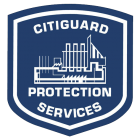5 EASY STEPS
TO SAFEGUARD YOUR NEW HOUSE
By Sarah P. Shimanski
If you’ve purchased a new home and just settled in, you’re probably concerned about burglars or intruders and want to protect your house. If this is the case, you’ll need to pay attention to fortifying your home security. Consider implementing these five easy steps:
1) Remove and Change All Exterior Locks-Since you’re not aware who may have possession of keys to your home, it’s important to change every outside lock. The previous seller may have passed keys around to the neighbors or a problem roommate in the past. After moving in, the first thing you should do is schedule a locksmith to work on changing the locks or if you’re handy, you can try fixing it yourself by purchasing locks at the nearby hardware store.
2) Change The Security Code On Your Alarm System-If your home is lucky enough to have a built in alarm system, make time to reestablish a new password code. Pick a password code simple for you to remember and only divulge it with people you trust and only when absolutely necessary. Hide the owner’s instruction manual in a safe place just in case you need to troubleshoot future problems or need further operation instructions. If your home wasn’t equipped with one, you may consider getting some estimates and installing one, especially since it’s cheap to rent one.
3) Check All Sprinkler Systems And Smoke Detectors-While most home inspection reports may seem thorough, sometimes an inspector may skip over checking an item. Even though your home inspection report may indicate they’re installed according to local building code, make sure you take the time to test each one and be sure they’re functioning per manufacturer specifications. Change all battery operated alarms with a brand new set of long life batteries. To give your family the most protection, install detectors in every bedroom or hallway that leads to a bedroom. If you live in a large condo complex or hi rise building, take the time to study the emergency escape routes and how the sprinkler system works.
It’s also prudent to install a carbon monoxide alarm on each floor of your house, or close to where you sleep. Carbon monoxide (CO) is a clear odorless gas that is toxic to humans and pets. The primary causes of inadvertent CO poisoning is due to malfunctioning heaters, fireplace flues, and oil heaters.
4) Coordinate An Emergency Escape Route-When an emergency happens, it’s easy to become confused and forget your way out. It’s best to periodically practice emergency evacuation and train everyone in your household to recognize where the exits and entrances are located. If you reside in a house with two levels, make sure everyone knows the fastest and safest way to escape.
5) Childproof Your Home-If you have little kids, you’ve probably already experienced childproofing your home. All households contain hazardous chemicals so it’s important for you to store all toxic chemicals such as cleaners and solvents where children can’t reach them and put safety locks on all cabinets doors. Important emergency telephone numbers like your cellular telephone, police station, fire department, and physicians should be posted on your refrigerator or memo board.
About the Author
Are you searching for Fullerton homes for sale, then consider using these featured Fullerton Realtors to find one.
Article Source: http://EzineArticles.com/?expert=Sarah_P._Shimanski

